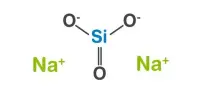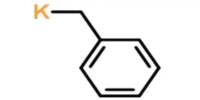Gallium(II) Selenide (GaSe) is a chemical compound. It belongs to the chalcogenide semiconductor family and possesses intriguing electrical and optical features. It has the same hexagonal layer structure as GaS. It is a photoconductor, a nonlinear optics second harmonic generating crystal, and has been employed as a far-infrared conversion material at 14-31 THz and above. GaSe is made up of gallium (Ga) and selenium (Se) atoms in a specified ratio. The chemical formula GaSe denotes a gallium-to-selenium ratio of 1:1.
Crystal Structure
The crystal structure of GaSe is layered. Individual layers are made up of hexagonally organized selenium atoms, with gallium atoms sandwiched between them. The layered structure is aided by the weak van der Waals forces between the layers.
Properties
- GaSe is a semiconductor with a bandgap energy that falls within the range of visible light. This makes it interesting for potential applications in optoelectronic devices such as photodetectors, light-emitting diodes (LEDs), and lasers.
- Optical Properties: GaSe exhibits nonlinear optical properties, making it useful for various optical applications, including frequency doubling (generating light at half the input frequency) and other nonlinear optical processes.
- Lubricating Properties: GaSe has been investigated for its lubricating properties, particularly in high-temperature and high-pressure environments. Its layered structure and low friction coefficient make it a potential candidate for lubrication in extreme conditions.
- Synthesis: GaSe can be synthesized using various methods, including chemical vapor transport and physical vapor deposition techniques. These methods involve the reaction of gallium and selenium precursors under controlled conditions.
Uses
GaSe has prospective uses in sectors such as electronics, photonics, and materials research due to its unique electrical and optical properties. However, its actual application may be hampered by processing and stability issues.
It is reported to have optical application promise, but its use has been hampered by the inability to easily grow single crystals. Gallium selenide crystals have enormous potential as a nonlinear optical material and a photoconductor.
In the frequency conversion of laser light, non-linear optical materials are used. The process of moving the wavelength of a monochromatic source of light, usually laser light, to a higher or lower wavelength of light that cannot be produced by a normal laser source is known as frequency conversion.
















